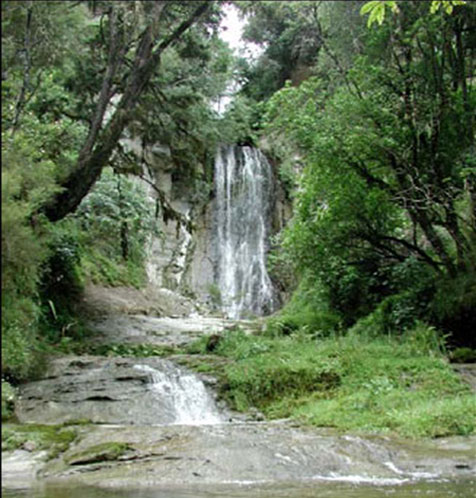| Knickpoint Migration |
 |
Project Summary
Personnel: Ben Crosby (Ph.D.) Knickpoint migration has long been recognized as a primary mechanism of river response to sudden base-level fall. As sudden base-level fall can be triggered by tectonic upheaval, climatic change, sea-level fall or river capture, knickpoint migration is an important aspect of channel incision and landscape evolution in a wide range of geologic, tectonic, and climatic settings. Indeed, in some environments knickpoint propagation appears to be the dominant mode of channel lowering. The distribution of actively migrating knickpoints within a basin sets the boundary between landforms that have adjusted to the new base level and those that have not, and therefore retain their relict, pre-incision form. Thus the processes involved and the physical controls on the rate of knickpoint retreat play a critical role in landscape response time to external forcing and in the dynamic coupling between tectonics, climate, and erosion. However, despite the critical importance of knickpoints in landscape evolution, little is known quantitatively about the controls on the rates and styles of knickpoint migration. We propose to exploit a natural experiment in knickpoint migration that has been running for ~18ka in the Waipaoa drainage basin on the East Cape of New Zealand's North Island. The proposed research plan is both straight forward and inexpensive. Over one hundred knickpoints demarcate the headward advance of a wave of incision initiated along the Waipaoa trunk stream at about 18ka, as recorded in tephra stratigraphy in alluvial fills on abandoned strath terraces (Berryman et al., 2000; Eden et al., 2001). Preliminary map and aerial photograph investigation indicates that both knickpoint migration rate and form (diffuse, steep/discrete, waterfall) show considerable variability within the drainage basin. Significant new data on the processes, rates, and styles (temporal form evolution) of knickpoint migration as a function of upstream drainage area (discharge and sediment flux), substrate lithology, and distance of knickpoint migration will be gathered and disseminated. Collected data will be used to test various bedrock channel incision models, and to refine / extend the most successful model, or develop a new model, as appropriate. We anticipate significant new quantitative insight into knickpoint migration, and therefore landscape response to tectonic, climatic, or eustatic forcing. We are committed to a serious effort to broadly disseminate results, including practical applications to predicting landscape sensitivity to landuse change. Thus we intend to: (1) develop a website for communication of results, (2) run seminars for local landowners and forest managers, and (3) develop educational modules at all levels, including K-12 instruction - the Waipaoa is a dramatic example of how dynamic the landscape we live in is, and how susceptible it can be to human disturbance. |